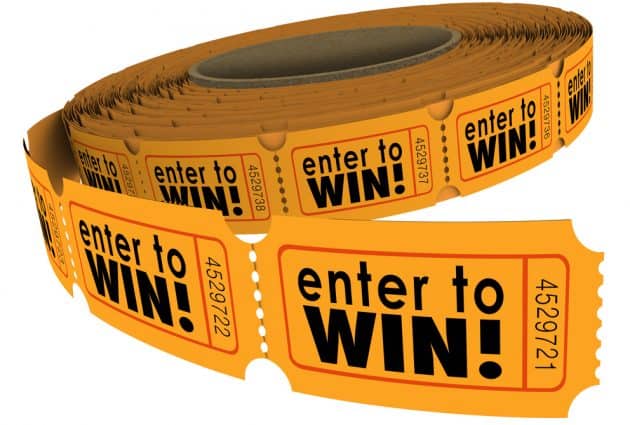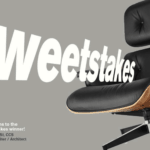Sales promotion can be a very effective tool to grow the sales of your building materials if it is used correctly. When it is used incorrectly, it can just be a waste of your budget or worse; it can damage the perceived value of your brand.
This is another post where I have a lot to say so it will take you about 12 minutes to read. You may also want to refer back to the first part about the rules of promotion to help you make better decisions in your future planning
Sales Promotion
Sales promotion is defined as a short-term incentive to encourage the sales of your product. Other marketing tools such as trade shows, advertising or your website offer the prospect the reasons to buy your product.
Sales promotion offers the reasons to BUY NOW! You can use mediums such as advertising, trade shows or your website to promote the promotion but they are not the promotion. The promotion is the offer.
Sales promotion can also be used to encourage a behavior such as signing up for something, visiting your website or attending an event.
The following rules of sales promotion are based on the writings of William A Robinson, the master of sales promotion. The commentary on the use of sales promotion in building materials is all mine.
What Sales Promotion Can Do for Building Materials Companies
- Obtain feature pricing, displays, and support for big boxes, dealers, home improvement contractors and builders.
- Increase or reduce customer inventories with anyone who stocks your products such as distributors, dealers, and big boxes.
- Motivate anyone who sells your products such as your sales force, independent reps, dealers, and distributors.
What Sales Promotion Can Not Do for Building Materials Companies
- Compensate for a poor sales force.
- Overcome product distribution problems.
- Compensate for weak marketing.
- Overcome problems with product pricing, quality, installation issues, warranties, availability or a poor customer experience.
- Build brand loyalty.
- Reverse a declining sales trend, other than in the short term.
When is Sales Promotion Most Effective?
J.O. Peckham, who worked for A.C. Nielsen, studied the effectiveness of sales promotion and found that it works best in these situations.
- On new brands or established brands with a major product improvement.
- On brands already enjoying an improving competitive trend.
- In conjunction with a sales drive to increase distribution.
- When used only occasionally.
- In addition to – rather than as a replacement of – regular customer marketing communications.
When is Sales Promotion Least Effective?
- On established brands with no product change.
- On established brands with a declining market share.
- As a replacement for a well thought out marketing communications or advertising program.
- In categories where promotion is already a way of life.
Warning: Promotions Can Be Addicting
Promotions are a very powerful tool and can be so successful at driving sales that it’s easy to become addicted to them. “That worked really well, let’s do it again!”
Just like many drugs, the more you use them, the less effective they are and the more you have to offer to get the same result. Eventually, you run out of more to offer.
Sales promotion plays a supporting rather than a leading role in your marketing program.
Building Materials Companies Frequently Get it Wrong
Promotions should be available for a limited time to strengthen their appeal, make them special and not hurt the brand by reducing the perceived value of a product. Many building materials customers have ongoing rebate programs that are not a promotion, they have become a cost of doing business and are now just another way to reduce their pricing.
Loyalty programs are also a type of promotion. If they are not done correctly, the value of what is given out can be more important than the brand or the product. This means that like a lower price, the competitor who offers the best loyalty reward gets business instead of the company with the best product and service.
Sweepstakes are another type of promotion that come in and out of vogue. With the size of lottery prizes frequently exceeding $200 million, it’s almost impossible to get sweepstakes to work today if you simply offer money. You used to be able to offer $1,000, and it would get attention. Today even one million dollars sounds as lame as when Dr. Evil demanded ONE MILLION DOLLARS in the Austin Powers movie.
To be desirable, a prize has to be unique and perhaps only available through the sweepstakes, such as a ride with a race car driver. Unique experiences and one-of-a-kind prizes are what work today. If the prize is something fairly ordinary, it won’t generate much excitement.
Another challenge for sweepstakes is that you used to fill out an entry form and if you didn’t win, your contact information was thrown away. Today consumers recognize that their information will be kept and probably lead to future contacts that they may not want. This is another reason why a sweepstakes has to have a really desirable prize and be easy to enter.
How Not to Do a Sweepstakes (or How to Waste $250)
Yes, this sweepstakes has a very creative and fun theme. But the goal is more about benefitting CertainTeed than the consumer. It also looks like a lot of work for a very slim chance to win a measly $250.
In other words, if I spend an unknown amount of time poking around their website looking for three clues, I get a small chance to win $250, and the company gets my contact information. Doesn’t look like a very good offer to me.
It’s surprising that a company with the funds to do things right, like CertainTeed, ends up with an ineffective program like this.
This is an example of jumping from an objective like “We want more people to spend more time on our website” to the tactic of “Let’s Offer Them a $250 Amazon Gift Certificate.” There was no thinking or strategy.
The objective should have been, “We want to grow our sales to (contractors?, architects, builders?, homeowners?) Looking at the homepage, it’s not clear to me whom this promotion targets.
After you click on the “Enter Here,” you realize this promotion targets consumers. But it doesn’t clear up from there. It’s not obvious what you have to do to find the answers unless you read the small print. And then rather than taking you to pages that might interest a consumer, they take you to corporate and HR pages.
It’s up to you to figure out, “Why am I on this page?” While most people would give up at this point, I’m too curious to give up. So I scrolled down to the bottom of the page where I found a witch’s hat and assumed I should click on it. I click on the hat, and finally I find some very good content about formaldehyde, vermin and more.
They say there are eight horrors that can be found. As they lead you from one to the next with their clues, why would anyone go past the third one when that’s all you need to enter? I guess the next five must not be that important.
$250 may seem like a good offer to a junior marketing person. $250 is chump change to their audience, at least the successful ones, who could actually consider whether or not they want to use CertainTeed products.
Even if the prize was more desirable, a sweepstakes was not the right solution in this case. They should have taken these eight horrors and offered them in a call to action. Something like, “A New Home or Remodel is a Major Investment. Don’t Make These Common Mistakes. Download Here.”
They have good content that is hidden behind a cute idea, so it is hard to find. The Halloween theme limits the time that this idea will work. If they took more of a marketing automation approach and offered these eight tips in exchange for the contact information they want, they would have gotten a longer lasting program that got much better results.
And they could have saved the $250. Let the finger pointing begin!
GAF Is A Better Example
Here GAF also has a creative and fun theme, but they are offering a very unique experience of a concert in New York City or Las Vegas. This promotion is about the customer rather than the company.
GAF uses sweepstakes as a sales promotion tool on a regular basis. They do sweepstakes very well. They have a clear objective and they know all the details required to make it successful.
They have given away custom motorcycles from Orange County Choppers, free roofs and more. The main reason you use a sweepstakes is to draw more attention to your product or brand. GAF knows how to do this. If you think a sweepstakes might be a good idea for you, watch how GAF does it.
How to Waste Some Serious Money
Here is an example of a beautifully designed and executed contest that has no reason to exist. I frequently criticize building materials companies as being ten years behind in marketing because the old white guy leaders aren’t comfortable with change.
This is an example of what happens when you don’t have an old white guy to knock some common sense into you. It also looks like an example of where you have more money than sense. Imagine Kim Kardashian deciding to get in the molding business.
It’s like they are trying to be the Kohler of molding and millwork. The world doesn’t need a Kohler of molding. The profit margin just isn’t there, and you can’t protect your designs.
Here’s the biggest problem with this contest and their entire marketing strategy.
This beautifully designed and executed contest appeals to an extremely small niche of the market. There are only a few builders who care about design at this level.
Builders are trying to sell houses. They don’t care about fancy design. And if this gets some customers to buy better molding, they can buy the same molding from their favorite supplier, who probably is not Metrie.
If you have a building product that is sold based on its appearance and aesthetics, this is one of best examples of a contest you’ll ever find. It’s not so much the value of prizes, but the expensive Kohler-esque quality of the photography, the caliber of the judges and many other details.
You can do a well executed and beautifully designed promotion like this, just make sure it will actually help you to be more successful and actually sell enough product to make it a good investment.
Promotion is More Than Sweepstakes and Contests
I have used sweepstakes and contests in the previous examples. There are ten different sales promotion techniques that should be considered depending on your situation and goals. Using just one technique can impede your effectiveness.
It’s like you are a military commander who has tanks, infantry, artillery, bombers, fighter planes, missiles, ships, submarines, cyber warfare and special forces, but you only want to use tanks.
I will be writing a post in the near future that describes the ten techniques and when to use them.
Smaller Companies Can Use Sales Promotion Effectively
Smaller building materials companies are usually at a financial disadvantage in marketing where larger companies can dramatically outspend them in marketing. Smart smaller companies, however, don’t let this deter them. They just out think and out smart the bigger guys.
Here is an example of a smaller company making a good use of sales promotion. Rather than using a sweepstakes, they are using the sales promotion technique of a rebate.
DECRA is in that growing category of residential roofing that I call, “anything that isn’t a three tab shingle that allows a homeowner the look of more expensive tile, slate, or shake.”
There are many companies in this category, and new ones seem to be entering everyday with products made of metal, cement, composites and even old tires. All of them are small compared to an Owens Corning or GAF.
As in many categories, the key to success is whether or not the contractor will start to use your product. And contractors are the most difficult person to change in all of building materials.
Here’s What Works About The DECRA promotion
- It’s simple; it’s easy to understand.
- It overcomes one of the contractor’s biggest fears of change. He does not know how to estimate a project with a different product because he can’t accurately estimate the labor. Will they be faster or slower? What mistakes will they make that may require a custom call back? If they estimate too high to compensate for these issues, they may lose the job. If they estimate too low, they may lose money.
- There is a cost to train his installers that he usually has to pay.
- Business for contractors is good right now, due to labor shortages, so they have little reason to try a new product.
- The value is in a context that the contractor can value. Winning $5,000 for a roofing contractor has a little appeal. A contractor knows the costs and profit on an average job, and $1,000, $1,750 or $2,250 per job is a very meaningful, relatable, and desirable amount of money.
- It’s measurable. DECRA can measure the success of the program.
- It’s designed to create more customers who will make repeat purchases rather than just a one-time sale.
- It gives salespeople and distributors a new reason to talk about DECRA to contractors.
- It sets DECRA apart from all the others, “See how beautiful and realistic our roofing looks” competitors. The contractor really doesn’t care about appearance. He cares about the business proposition of why your product will make him more successful, and this DECRA promotion gets that conversation started.
If you can’t tell, I think this is a very well done use of sales promotion.
In Conclusion
Sales promotion is a tactic that should be considered anytime you are looking to grow your sales.
Remember that sales promotion can be addicting and that it plays a supporting rather than a leading role in your sales and marketing.
Don’t just jump to a type of promotion, like a sweepstakes without considering the other techniques. A sweepstakes may seem easy and exciting, but it can easily be a failure.
If you can’t wait for my upcoming post on the ten sales promotion techniques and have a question, please contact me.
Subscribe To My Newsletter
If you like what I say, sign up for my newsletter here and get my weekly newsletter every Sunday night.













